Has the sun's irradiance become whiter in the past few decades?
- Thread starter Javiroll
- Start date
You are using an out of date browser. It may not display this or other websites correctly.
You should upgrade or use an alternative browser.
You should upgrade or use an alternative browser.
The Sun has always been a white star. The story of how it became yellow isn't too hard to understand since you've already mentioned the crayola experience.As a child, all drawings of the sun were always yellow but, due to changes in the sun's processes (probably due to helium levels) the sun's shine is whiter than it used to be. Is this so and why?
The Sun is painfully bright until it begins to set on the horizon. Our atmosphere reduces this intensity by roughly 10,000 times, or more. This often makes it easy to look at. But the atmosphere causes blue light to scatter out of these sunbeams. This scattering effect is a function of wavelength, so blue scatters the most, then green, etc. This scattering of predominantly blue light is why the sky is blue since some of the blue light will scatter a 2nd time out of the sky and into your eye.
But this blue scattering means the Sun itself will appear first as yellow, then orange (as yellow light scatters), then , though rare, red. These redder colors require an atmosphere that is very dusty or laden with smoke from forest fires, etc.
Thus, when we think of the Sun's color, we think of when we look at it, which is mostly during sunsets. This is when it appears yellow.
But astronomers know about this scattering, so given that a noontime Sun projects a white image -- you can do this yourself by using a tiny pinhole in thin foil or board - it's surprising to me that more hasn't been said about its white color.
I think that what happen began in the late 1800s when the spectrum of stars could be studied. Father Secchi (College of Rome) studied over 4000 spectrums. He categorized these spectrums, first into three types. The Sun's spectrum was somewhat close to Capella's spectrum, which appears yellow. Secchi types were loosely based on color and the Sun fell into the yellow type.
The bulk of stellar astronomy is regarding those spectrums, not nailing-down their color. So, the "yellow" term in astronomy should be taken as its spectral class, not its formal color.
It has been a fun study trying to hunt down how the Sun became yellow, and there is more to the story. It was quite a surprise to me when I learned, years ago, that the Sun's true color was not known much within science, though solar physicists likely all knew since they saw tons of white projections.
Nevertheless, it seems the folks in Boulder, CO are still convinced it is a peachy pink color. This is based on a computer model that is demonstrably false. So, there is still more color fun to come.
There is a zany blog that gives more detail of why the "Sun Ain't Yeller" - Color of the Sun... Revelation
Last edited:
Thank you for a lengthy and well thought out reply.
Hardcrunchyscience
BANNED
As a child, all drawings of the sun were always yellow but, due to changes in the sun's processes (probably due to helium levels) the sun's shine is whiter than it used to be. Is this so and why?
Your childhood drawings are not a very valid or accurate scientific observation. And you say the sun is whiter now. How did you measure that????
So, the answer is no. Clearly.
Btw, I should have mentioned that my avatar is an image taken from what was the world’s largest solar telescope (McMath- Pierce) at Kitt Peak. The color plastic pieces were added to get color adjustment.
This white result completely falsifies any hope for a yellow Sun.
This white result completely falsifies any hope for a yellow Sun.
Hardcrunchyscience
BANNED
Btw, I should have mentioned that my avatar is an image taken from what was the world’s largest solar telescope (McMath- Pierce) at Kitt Peak. The color plastic pieces were added to get color adjustment.
This white result completely falsifies any hope for a yellow Sun.
No it does not. The sun color is not that. I can see that out on my deck. They adjusted it, or you did. The solar spectrum is closely described by a black body at about 5500K. That spectrum is not flat over the visible spectum. Thus it will not be true white (which would require the spectrum to be flat). It peaks yellowish, thus the yellowish tinge. A peak anywhere else would tinge that color. White requires a flat visible light spectrum. Black body ain't flat there. QED. You are wrong, look at Wikipedia.
Just for grins. ChatGPT says the following:
The sun appears to be yellow or white when observed from Earth, but its actual color is white. The color of the sun appears to change throughout the day and during different atmospheric conditions, such as sunrise and sunset, when it can appear orange, red, or even pink. The color of the sun is determined by the wavelengths of light emitted by it, which are primarily in the yellow, orange, and red part of the visible spectrum.
The color of the sun can be explained using the principles of physics and optics.
The sun emits light across a broad range of wavelengths, including those that fall within the visible spectrum of light. When this light reaches Earth's atmosphere, it is scattered in all directions by the gases and particles in the air. This scattering process is what gives the sky its blue color, as blue light is scattered more than other colors in the visible spectrum.
However, at sunrise and sunset, when the sun is low on the horizon, the light has to travel through more of the Earth's atmosphere to reach our eyes. This causes more scattering of the shorter blue wavelengths and allows more of the longer red wavelengths to pass through, giving the sun a reddish or orange hue.
The sun's actual color is white, which is a combination of all the colors in the visible spectrum. However, when the sun is viewed directly, its brightness can make it appear yellow or white.
It's also worth noting that the color of the sun can vary slightly depending on the temperature of its outer layers. Cooler regions of the sun's surface, known as sunspots, appear slightly darker and cooler, giving the sun a slightly mottled appearance. However, these temperature variations are not significant enough to change the overall color of the sun.
The sun appears to be yellow or white when observed from Earth, but its actual color is white. The color of the sun appears to change throughout the day and during different atmospheric conditions, such as sunrise and sunset, when it can appear orange, red, or even pink. The color of the sun is determined by the wavelengths of light emitted by it, which are primarily in the yellow, orange, and red part of the visible spectrum.
The color of the sun can be explained using the principles of physics and optics.
The sun emits light across a broad range of wavelengths, including those that fall within the visible spectrum of light. When this light reaches Earth's atmosphere, it is scattered in all directions by the gases and particles in the air. This scattering process is what gives the sky its blue color, as blue light is scattered more than other colors in the visible spectrum.
However, at sunrise and sunset, when the sun is low on the horizon, the light has to travel through more of the Earth's atmosphere to reach our eyes. This causes more scattering of the shorter blue wavelengths and allows more of the longer red wavelengths to pass through, giving the sun a reddish or orange hue.
The sun's actual color is white, which is a combination of all the colors in the visible spectrum. However, when the sun is viewed directly, its brightness can make it appear yellow or white.
It's also worth noting that the color of the sun can vary slightly depending on the temperature of its outer layers. Cooler regions of the sun's surface, known as sunspots, appear slightly darker and cooler, giving the sun a slightly mottled appearance. However, these temperature variations are not significant enough to change the overall color of the sun.
Hardcrunchyscience
BANNED
Just for grins. ChatGPT says the following:
The sun appears to be yellow or white when observed from Earth, but its actual color is white. The color of the sun appears to change throughout the day and during different atmospheric conditions, such as sunrise and sunset, when it can appear orange, red, or even pink. The color of the sun is determined by the wavelengths of light emitted by it, which are primarily in the yellow, orange, and red part of the visible spectrum.
The color of the sun can be explained using the principles of physics and optics.
The sun emits light across a broad range of wavelengths, including those that fall within the visible spectrum of light. When this light reaches Earth's atmosphere, it is scattered in all directions by the gases and particles in the air. This scattering process is what gives the sky its blue color, as blue light is scattered more than other colors in the visible spectrum.
However, at sunrise and sunset, when the sun is low on the horizon, the light has to travel through more of the Earth's atmosphere to reach our eyes. This causes more scattering of the shorter blue wavelengths and allows more of the longer red wavelengths to pass through, giving the sun a reddish or orange hue.
The sun's actual color is white, which is a combination of all the colors in the visible spectrum. However, when the sun is viewed directly, its brightness can make it appear yellow or white.
It's also worth noting that the color of the sun can vary slightly depending on the temperature of its outer layers. Cooler regions of the sun's surface, known as sunspots, appear slightly darker and cooler, giving the sun a slightly mottled appearance. However, these temperature variations are not significant enough to change the overall color of the sun.
Unfiltered solar flux peaks yellow.
Right. But it's worth noting that one can, too often, infer that it's the combination of all the colors that gives us a white result. I've seen it stated that "white is the result of having all the colors". You correctly used "a result". I've seen this stated incorrectly numerous times, including by astronomers, who clearly no better, but don't seem to want to go into the weeds on this topic.The sun's actual color is white, which is a combination of all the colors in the visible spectrum.
The reason is simple: all stars (red and blue) emit all the colors, so how could a red star be white?
Speaking of the weedsIt's also worth noting that the color of the sun can vary slightly depending on the temperature of its outer layers. Cooler regions of the sun's surface, known as sunspots, appear slightly darker and cooler, giving the sun a slightly mottled appearance. However, these temperature variations are not significant enough to change the overall color of the sun.
So, to push the non-yellow Sun to a greater finality... if the solar limb isn't yellow then how could any part of the disk appear yellow? [Again, see my avatar]
Now the final nail for a coffin that won't seem to close... The atmosphere, as has been stated above, scatters mostly the blue colors, so my avatar has mostly blues removed from it. Thus, adding those scattered blues back into this white image to allow us a color that would be seen from space (properly attenuated, of course) guarantees no yellow could be seen. QED!
Last edited:
Look closer at the graph. You won't find the peak in the yellow band. They color it yellow, perhaps, because the graph has a white background. So, we're back to the Crayola argument.
The yellow band in the spectrum is surprisingly narrow, and its peak is 580nm. [My graph below tries to simulate those band widths.] The peak we see in the graph you link to is around 485 nm, which is in the blue band.
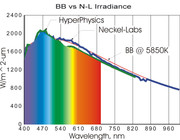
But the energy plots for solar irradiance don't do color justice. Our eyes respond to photons, so the photon flux density is a far better model to use. Since E = hv, then the higher frequency (v) colors have fewer photons for the blue band than the other colors (except violet). This flattens the curve in a remarkable way, IMO. It is almost flat as a pancake, so no color has any advantage over another. [The eye seems to make such a distribution appear white, not that it is required to do that.]

[My graph taken from the data as noted. AM0 -- Air Mass Zero, so no air, thus as measured in space.]
Perhaps a flat photon flux distribution would prove to be a nice "white" definition.
Last edited:
I would venture to say that our vision is like our hearing. We probably have color sensitivity, like we do with audio frequency. So, we probably see a different spectrum in small ways, like we hear different sounds in small ways. Our ears use envelope detection for sound, our eyes might use a similar protocol for light detection. Remember the dress color sensation a while back?
And there would be a general average spectrum, made of individual sensory spectrums.
And there would be a general average spectrum, made of individual sensory spectrums.
Indeed, these nuances are important.I would venture to say that our vision is like our hearing. We probably have color sensitivity, like we do with audio frequency. So, we probably see a different spectrum in small ways, like we hear different sounds in small ways. Our ears use envelope detection for sound, our eyes might use a similar protocol for light detection. Remember the dress color sensation a while back?
And there would be a general average spectrum, made of individual sensory spectrums.
But, fortunately for this topic, we can all look at a noon-time projection of the Sun, even if it's from a wimpy pinhole projection, which can distort the Sun's limb. I think the number of people who would agree that this overhead projection of the Sun appears white is about equal to the number of people that would claim a red apple is red. [This assumes a clean sky, not loaded with particulates.]
IOW, I don't think, in this case, that spectral sensitivity of the eye is so subjective it would change the white result, though I am arguing more that it is not yellow since hypotheses can only be falsified, not proven.
[There is a tiny chance the central zone of the Sun could have a tint of blue, after all. Note that I stated that this temperature is around 6390K, which one would expect to be a bit blue. But the odds are against this, IMO.]
I may as well show a better image of my avatar. This image was taken by Roy Lorenz and Dr. Drew Potter, per my humble request. They were kind enough to toss those color plastic pieces in this image to help me demonstrate color accuracy. Their f50 telescope produces large, elegant projections on a couple of separate tables. This image was probably about 2 ft. in diameter. There were no filters used of any kind.
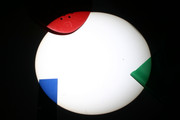
[Odd, the image is stretched, which is not true of the original.]
Here's some artwork I attempted in the past (for a U of Stanford general public project) that attempts to capture the Sun and it's planetary children in true color. [Venus is too yellow, but no actual color images were found back then.] Not perfect, but on the right track, IMO.
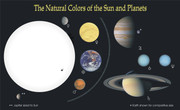

[Odd, the image is stretched, which is not true of the original.]
Here's some artwork I attempted in the past (for a U of Stanford general public project) that attempts to capture the Sun and it's planetary children in true color. [Venus is too yellow, but no actual color images were found back then.] Not perfect, but on the right track, IMO.

Ahh! The age old question concerning the Sun's color. Methinks that the yellow perception has been around since we evolved enough to contemplate the Sun and its nature. We can't really see the Sun midday in a clear sky, it's just too bright, we see it at sunrise and sunset and it appears yellowish of reddish because of atmospheric scattering. Hence the yellow sun in artwork. Seeing it as white when there are clouds and appearing white probably just has not occurred to the lay person.
Also, remember that our color detectors, the rods, come in three flavors, red, green, and blue. Helio's white sun avatar appears white because all three emitters in your monitor transmit all three colors equally, your eyes detect all three colors equally and your brain interprets this as white. The aforementioned avatar was captured either on en electronic detector capturing the image detected by CCD pixels, or by film. In either case, because the image brightness is saturated, all the detectors or film chemistry will capture it as white.
I recall an article in Sky and Telescope many years ago that white objects appear white because although the Sun emits a bit more yellow than the other wavelengths, the light reflected from a white object is pretty much saturated, hence the white color. If we were on a planet orbiting a red or blue star, the brightness would cause white objects to appear white because the light again is saturated. An image of the star from up close would likely appear very much as Helio's avatar. I imagine from a far distance, the Sun would appear a bit yellowish not unlike how we perceive similar stars from here.
So, the Sun is white because it is just so bright from Earth, a bit yellow from afar because we will see many less photons, our eye or detector are less saturated.
Stars will show just a hint of color from white because the eye/detector/film is still a bit saturated.
Also, remember that our color detectors, the rods, come in three flavors, red, green, and blue. Helio's white sun avatar appears white because all three emitters in your monitor transmit all three colors equally, your eyes detect all three colors equally and your brain interprets this as white. The aforementioned avatar was captured either on en electronic detector capturing the image detected by CCD pixels, or by film. In either case, because the image brightness is saturated, all the detectors or film chemistry will capture it as white.
I recall an article in Sky and Telescope many years ago that white objects appear white because although the Sun emits a bit more yellow than the other wavelengths, the light reflected from a white object is pretty much saturated, hence the white color. If we were on a planet orbiting a red or blue star, the brightness would cause white objects to appear white because the light again is saturated. An image of the star from up close would likely appear very much as Helio's avatar. I imagine from a far distance, the Sun would appear a bit yellowish not unlike how we perceive similar stars from here.
So, the Sun is white because it is just so bright from Earth, a bit yellow from afar because we will see many less photons, our eye or detector are less saturated.
Stars will show just a hint of color from white because the eye/detector/film is still a bit saturated.
Yes, a setting yellow Sun is far more, well, colorful than that painful bright object overhead. Certainly more interesting for artists.We can't really see the Sun midday in a clear sky, it's just too bright, we see it at sunrise and sunset and it appears yellowish of reddish because of atmospheric scattering. Hence the yellow sun in artwork. Seeing it as white when there are clouds and appearing white probably just has not occurred to the lay person.
Our atmosphere reduces an overhead Sun (AM1 or one atmosphere) by very roughly 10,000 times when it is setting. This amount of reduction is needed to put the intensity to a more comfortable level. If the atmosphere is clean, even a setting Sun can be a bit painful, and it isn't all that yellow if that is the case. Here in Texas, we get enough dust, etc., to often see very yellow solar discs when setting. This would be the safe time to see and enjoy the Sun, and look for sun spots, but this should be done through glass of some kind -- the IR intensity is almost as strong as overhead. This can damage the eye if unprotected. So be warned!
Yes, we have those "flavors"Also, remember that our color detectors, the rods, come in three flavors, red, green, and blue.
I'm curious if the output from the screen is in photons/sec, or energy flux?Helio's white sun avatar appears white because all three emitters in your monitor transmit all three colors equally, your eyes detect all three colors equally and your brain interprets this as white.
It was a Canon Rebel, IIRC. Cameras try to reproduce color accurately, which requires software. The software, as I understand, benefits greatly when there is a reasonably bright white object in the image. This is the preferred reference color for processing more accurately.The aforementioned avatar was captured either on en electronic detector capturing the image detected by CCD pixels, or by film. In either case, because the image brightness is saturated, all the detectors or film chemistry will capture it as white.
[I'm using "saturation" as the maximum useable flux density the cones can operate within photopic vision. ]
But, the projected Sun in the observing room at Kitt Peak has expanded the size of the disk enough to prevent saturation. It is quite comfortable looking at it. The color pieces in my avatar demonstrate that the light levels were within norms.
But, you raised yet another important argument for a white Sun. When the cones are saturated, then white is the result. So, even if an object clearly is seen as blue, if its intensity, along with the weaker colors, are bumped in flux high enough, when saturation occurs, then it will become blue-white, then with more intensity, white. This is addressed in what is known as "color constancy". Color constancy shows how our brains (retinex per Dr. Lamb) process color by converting the irradiance from the brightest source and converting this to be the "white" source to process the other colors.
I bet they offered no evidence, but consensus, that yellow is the strongest color emitted. The data is very clear that blue is the strongest solar emission energy, not yellow. The graphs above alone demonstrate the error of such a claim. [Oddly, however, if you closely at my photon flux graph you will see that yellow is the peak point, but this isn't a peak, but a little pimpleI recall an article in Sky and Telescope many years ago that white objects appear white because although the Sun emits a bit more yellow than the other wavelengths,...
I got serious about the Sun's color for two reasons: (1) When enjoying the fun in being in an astronomy forum, the forum's founding astronomer, Phil Plait (Bad Astronomy) stated he was unsure of the Sun's true color. (2) Then I soon read an article in a science magazine written by an astronomer on the East Coast that claimed the Sun was a bit green! The article did a great job in presenting how the eye operates, but a green Sun? Crazy that they were this far off. So, I saw no reason why an amateur astronomer couldn't step in and research this topic more seriously. I tried many things, but my avatar, as it turned out, was all that is needed, as stated above. [Find "QED" and the sentences before it.]
Saturation of your color cones is uncommon and often comes with pain. If you look at a white object and you have no trouble seeing colorful objects around it, then saturation has not occurred. [This is another reason for those color pieces in the avatar.]... the light reflected from a white object is pretty much saturated, hence the white color.
Why would a star with weak yellow emissions appear yellow? If they have the same color constancy effects, even somewhat greater yellow emissions would favor a white result, ignoring atmospheric effects, of course. It should be no surprise that most stars appear white when we adjust for atmospheric effects. Often we see stars like Capella with a yellow tint, but this is due to atmospheric effects, IMO. From space, I wonder what color Capella would have?If we were on a planet orbiting a red or blue star, the brightness would cause white objects to appear white because the light again is saturated. An image of the star from up close would likely appear very much as Helio's avatar. I imagine from a far distance, the Sun would appear a bit yellowish not unlike how we perceive similar stars from here.
Last edited:
Light is a flux. It's hard to discern with our senses and our instruments. It's a true cluster. A cluster of flux. Clusterflux. A flux of lengths. A flux of rates. A flux of phase or timings. A flux of durations. And a flux of angles and twists. Any measurement is an average of all these fluxes.
So easy and simple to sort out. All for an average result. When we can't discern....we average.
Why not figure out and determine the true nature of one light(radio) wave first, before sorting thru a zillion of them? And start off with a one direction velocity. NOT an average velocity.
So easy and simple to sort out. All for an average result. When we can't discern....we average.
Why not figure out and determine the true nature of one light(radio) wave first, before sorting thru a zillion of them? And start off with a one direction velocity. NOT an average velocity.
Since we speak of Star color from the bottom of our atmosphere, what we need is a cubesat with a small scope and camera to image stars and classify stars according to their space image color, removing the big filter we have down here. Hubble and Webb are too busy doing important stuff.
Hipparcos cataloged stars for position and intrinsic brightness, but I don’t think it classified them.
Hipparcos cataloged stars for position and intrinsic brightness, but I don’t think it classified them.
Last edited:
Yes, that would be cool and it would "open some eyes", IMO. This space imager would need a color wheel for calibration, but this isn't something new. One or more Mars rovers have these onboard. The "natural colors" seen of Mars are due to this calibration.Since we speak of Star color from the bottom of our atmosphere, what we need is a cubesat with a small scope and camera to image stars and classify stars according to their space image color, removing the big filter we have down here. Hubble and Webb are too busy doing important stuff.
Hipparcos cataloged stars for position and intrinsic brightness, but I don’t think it classified them.
Don Pettit, on one of his ISS trips, wanted to do a pinhole projection for the Sun. Unfortunately, he wasn't able to do this experiment. Perhaps because the result seems pretty obvious, especially for a pinhole projection.
One fun technique used is to defocus the brighter stars to spread their light over a larger area on the sensor, or eye. This helps desaturate them.
Here is an image taken from Kitt Peak (less atmospheric issues, probably) using the progressive defocusing technique and what was the closest twin to the Sun (18 Sco) at that time. This is a color image, btw.:
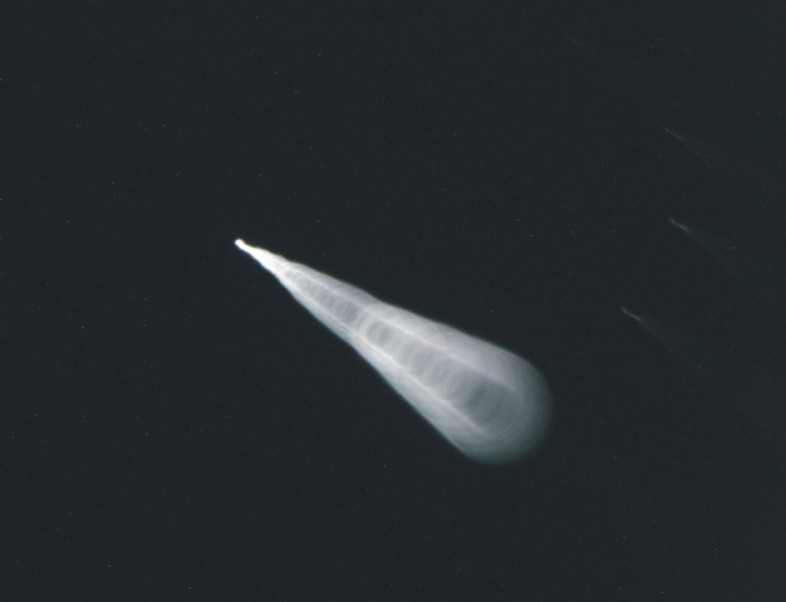 dell laptop keyboard sticking
dell laptop keyboard stickingBut next to 18 Sco is a hotter (bluer) star and a cooler star (more yellow). So we imaged them as well...
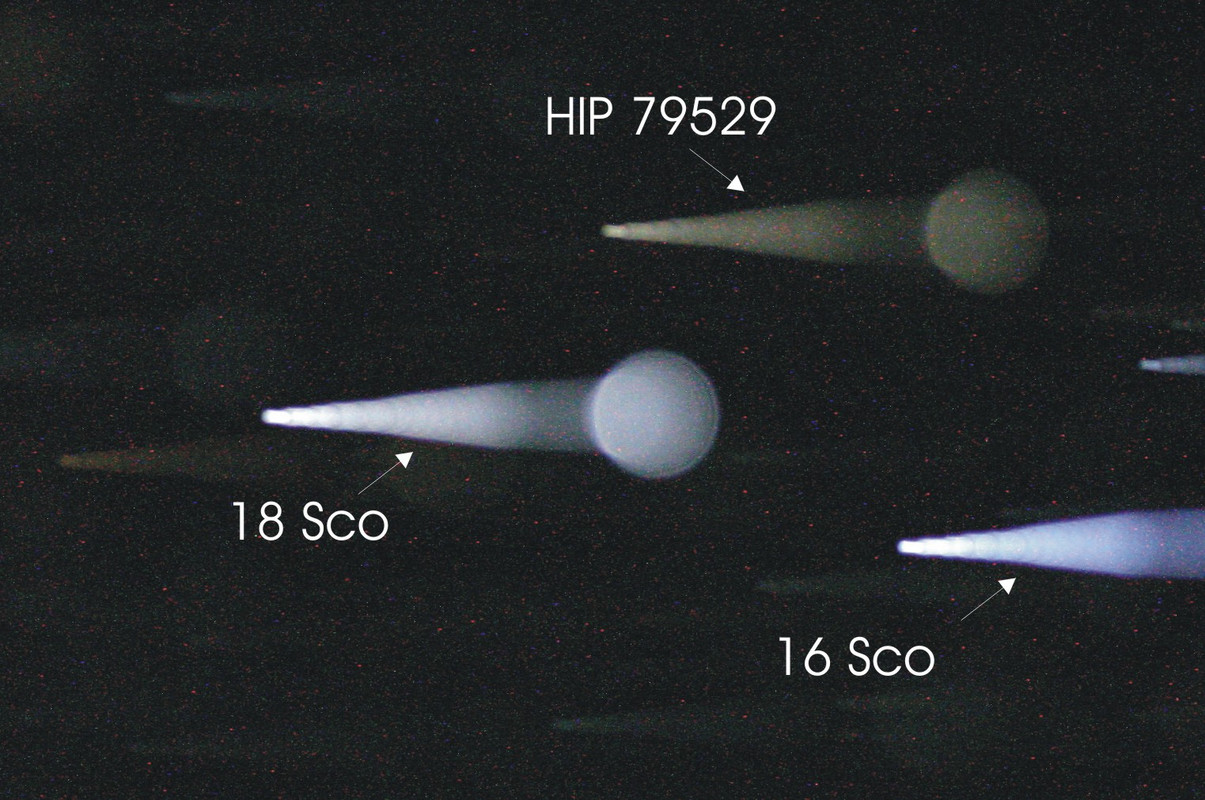
A more serious astrophotgrapher, Stefan Seip, has used this technique to get some great images. Here's his work (with permission) on the Southern Cross...
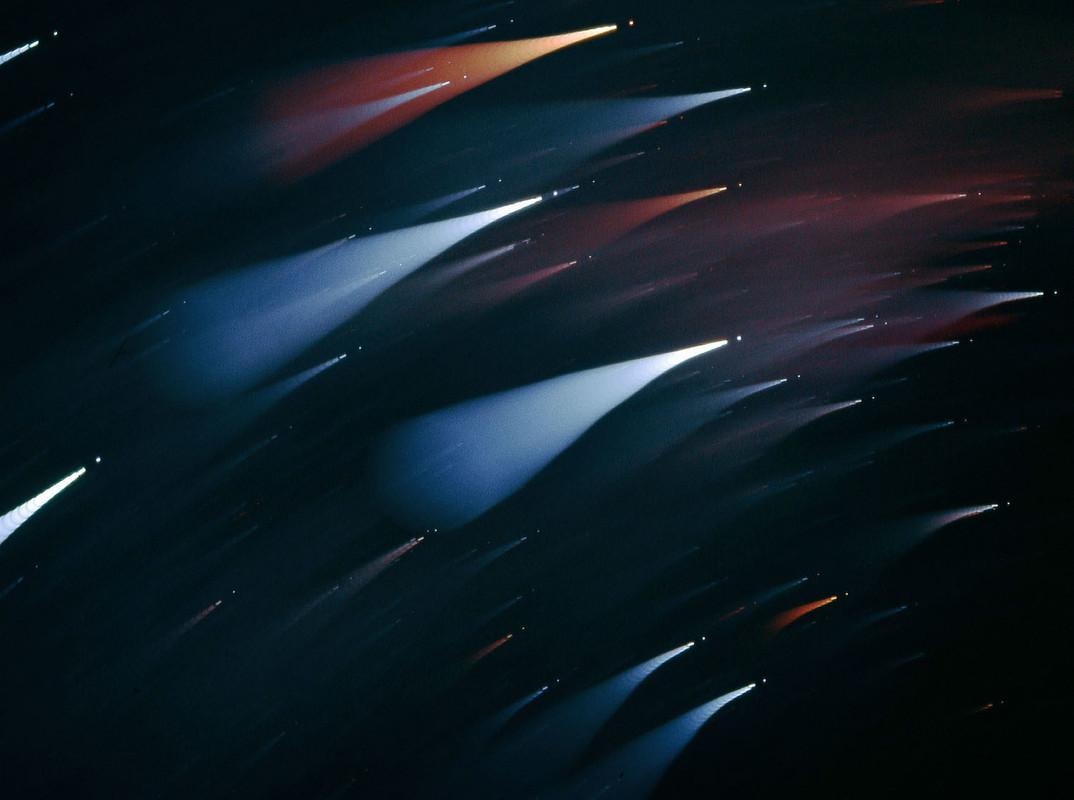 mac keyboard tester
mac keyboard testerSome good images there. I note that at the focused end of each Star image they look pretty much white, but toward the defocused end you get much more color, due to less saturation on the imager.
Yes, this goes to your point about the problems when an object is too bright, exceeding the saturation level of the sensor.Some good images there. I note that at the focused end of each Star image they look pretty much white, but toward the defocused end you get much more color, due to less saturation on the imager.
No, the sun's irradiance has not become whiter in the past few decades. The sun's irradiance measures the sun's total energy output at all wavelengths. It has remained relatively constant over the past few decades, with only minor fluctuations due to natural variability. The spectral distribution of the sun's energy output, which determines its color, has remained stable over this period. No evidence suggests that the sun's color or irradiance has changed significantly in recent years.
Nit….~ 4.5 billion years, but your point is correct either way.The Sun has increased its luminosity something like 30% of its life of 3 1/2 billion years, so, any increase in long-haul averages would be insignificant even since the beginning of civilization until now.
As more He is formed from fusion, the core will become more dense, and fusion will creep radially outward allowing for a higher fusion rate. [I think this is the better picture.]. But we have several billion more years before things get really ugly.
Similar threads
- Replies
- 0
- Views
- 766
- Replies
- 0
- Views
- 681
- Replies
- 5
- Views
- 2K
- Replies
- 0
- Views
- 1K
- Replies
- 19
- Views
- 3K
TRENDING THREADS
-
New interpretation of QM, with new two-phase cosmology, solves 15 foundational problems in one go.
- Started by Geoff Dann
- Replies: 320
-
Hubble Tension explained (including its value) by the two phase cosmology
- Started by Geoff Dann
- Replies: 210
-
Basic Error: The accelerating Universe conclusion - reason
- Started by Gibsense
- Replies: 263
-
-
The birth of the Quantum Convergence Threshold (QCT):
- Started by Capanda Research
- Replies: 84
-
-

Space.com is part of Future plc, an international media group and leading digital publisher. Visit our corporate site.
© Future Publishing Limited Quay House, The Ambury, Bath BA1 1UA. All rights reserved. England and Wales company registration number 2008885.

